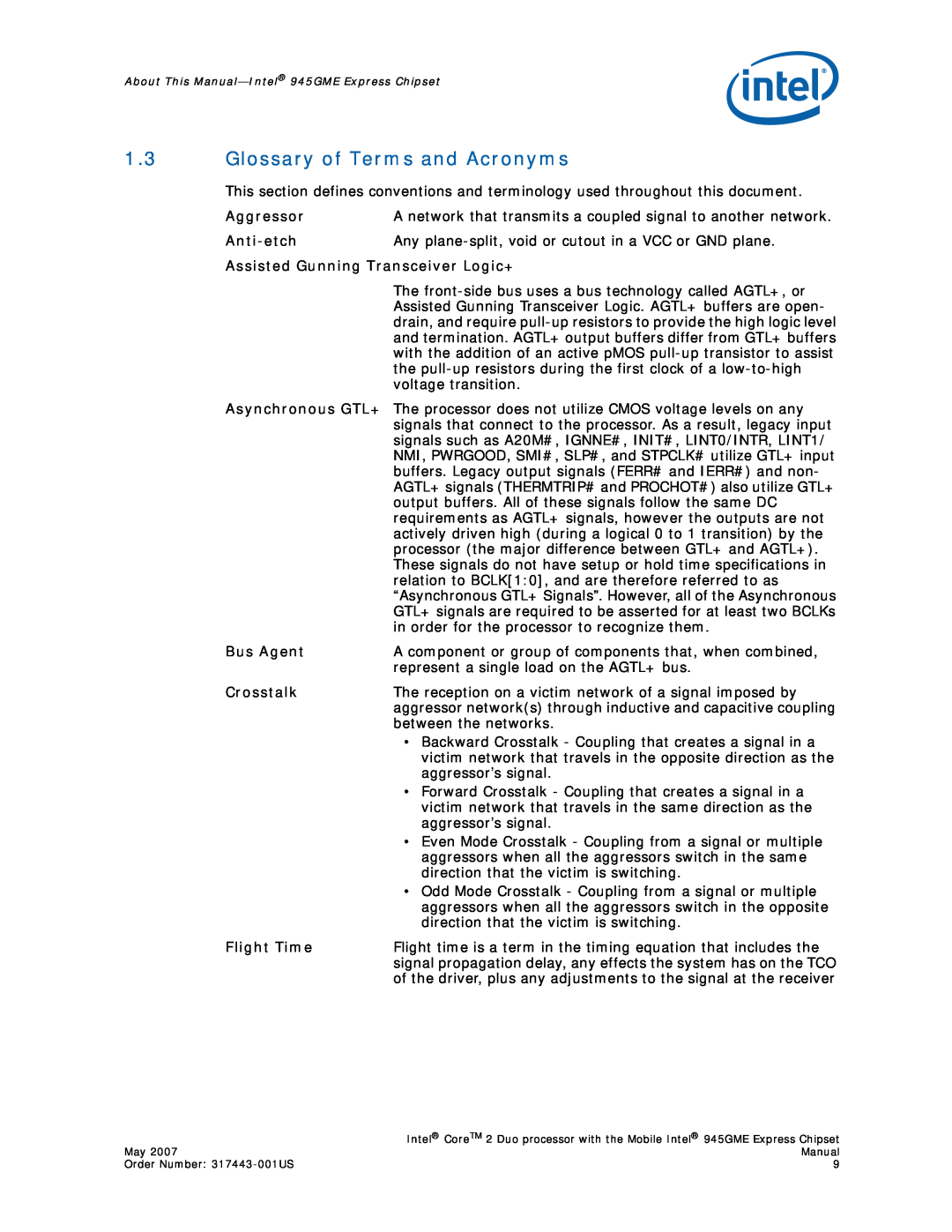
About This
1.3Glossary of Terms and Acronyms
This section defines conventions and terminology used throughout this document.
Aggressor | A network that transmits a coupled signal to another network. |
| Any |
Assisted Gunning Transceiver Logic+
The
Asynchronous GTL+ The processor does not utilize CMOS voltage levels on any signals that connect to the processor. As a result, legacy input signals such as A20M#, IGNNE#, INIT#, LINT0/INTR, LINT1/ NMI, PWRGOOD, SMI#, SLP#, and STPCLK# utilize GTL+ input buffers. Legacy output signals (FERR# and IERR#) and non- AGTL+ signals (THERMTRIP# and PROCHOT#) also utilize GTL+ output buffers. All of these signals follow the same DC requirements as AGTL+ signals, however the outputs are not actively driven high (during a logical 0 to 1 transition) by the processor (the major difference between GTL+ and AGTL+). These signals do not have setup or hold time specifications in relation to BCLK[1:0], and are therefore referred to as “Asynchronous GTL+ Signals”. However, all of the Asynchronous GTL+ signals are required to be asserted for at least two BCLKs in order for the processor to recognize them.
Bus Agent | A component or group of components that, when combined, | |
| represent a single load on the AGTL+ bus. | |
Crosstalk | The reception on a victim network of a signal imposed by | |
| aggressor network(s) through inductive and capacitive coupling | |
| between the networks. | |
| • | Backward Crosstalk - Coupling that creates a signal in a |
|
| victim network that travels in the opposite direction as the |
|
| aggressor’s signal. |
| • | Forward Crosstalk - Coupling that creates a signal in a |
|
| victim network that travels in the same direction as the |
|
| aggressor’s signal. |
| • | Even Mode Crosstalk - Coupling from a signal or multiple |
|
| aggressors when all the aggressors switch in the same |
|
| direction that the victim is switching. |
| • | Odd Mode Crosstalk - Coupling from a signal or multiple |
|
| aggressors when all the aggressors switch in the opposite |
|
| direction that the victim is switching. |
Flight Time | Flight time is a term in the timing equation that includes the | |
| signal propagation delay, any effects the system has on the TCO | |
| of the driver, plus any adjustments to the signal at the receiver | |
| Intel® CoreTM 2 Duo processor with the Mobile Intel® 945GME Express Chipset |
May 2007 | Manual |
Order Number: | 9 |
